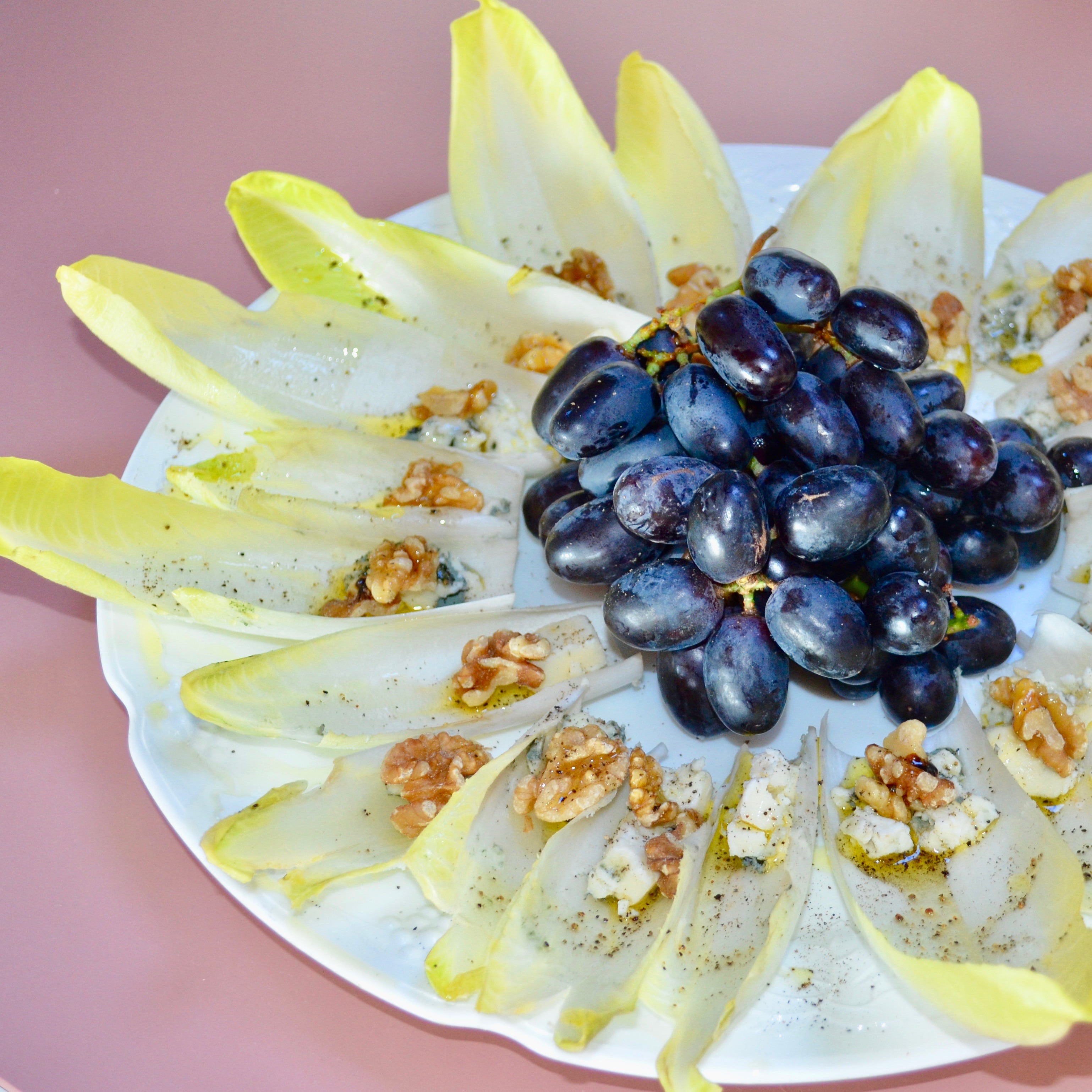The lovely, dainty morsel called the French hors d’oeuvre is a true Frenchism adapted and consequently, abused by American food culture. That is to say, the French hors d’oeuvre literally means ‘outside the work’ and is a singular word.
What Is an Hors d’oeuvre?
To clarify, the hors d’oeuvre is designed to whet the appetite offering a salty food as a stimulant. A typical French hors d’oeuvre is a small salty bite. For example, a slurp of caviar, olives, salty nuts, a few bites of cured (salted) meat and pickled veggies like celery, cucumber or radishes.
Sometime around the late 1800’s, a more complicated hors d’oeuvre appeared on the scene called “dainty dishes”. These small plates presented a more substantial delight, possibly caviar or a small pastry case filled with bits of mushroom in a creme sauce. Subsequently, they were soon served as separate courses, many times after the soup course.
By the early 1850’s Americans had moved to a multi-course meal. After that, the term ‘appetizer’ appeared in England (then almost simultaneously in America) to provide the Anglophone with the equivalent of the French hors d’oeuvre.
TIME: 15 minutes total time
After a long day of cooking, my go-to is the NO cooking French Pu-Pu Platter for dinner. During my childhood in the late 60’s and early 70’s, a surge of Chinese restaurants opened in Atlanta and were all the rage.
- 1 sourdough baguette or rustic bread
- 1 unpasterized cheese or triple creme
- chicken liver pate or truffle duck pate
- sliced salami, chorizo or summer sausage
- cornichon, olives & pickled veggies
- cucumber, radish, asparagus, endive
- canned fatty-fish
- hard-boiled egg
- good french sea salt, fleur de sel
- fresh cracked pepper
- extra virgin olive oil (evoo)
- fresh herbs, thyme, rosemary or other
- little knives, forks and a platter or board
NO Cooking French Meal – Chef Tips!
Chef Tip 1
Establish a budget.
Chef Tip 2
Pick one cheese. To clarify, I do not serve cheese before a meal. It destroys the palate. Therefore, the appetite. But for pu-pu platter, I pick one cheese. I like unpasterized & aged cheeses myself. Subsequently, I go for Gruyere or Comte, which are Alpine cheeses. Sometimes, a triple creme cheese, which means that the cheese has a higher percentage of milk fat.
Chef Tip 3
One long skinny, French baguette or slices of rustic bread. Slice and sprinkle with evoo and fresh thyme. Gluten-free crackers for those who need or choose.
Chef Tip 4
Choosing meats. As a Chef, I make homemade chicken liver pate and truffle duck pate, but you can buy pate at nicer grocery stores. In addition, I welcome salami, chorizo sausage or Southern summer sausage.
Chef Tip 5
Choosing a brine. Try cornichons (tiny French pickles) and briney pitted olives. In addition, pickled veggies, which are now are available in grocery stores. My personal favorite, pickled okra.
Chef Tip 6
Choosing vegetables. Obviously, if you have left-over blanched or steamed veggies in the fridge, use them. After that, peel and slice English seedless cucumbers, salted radishes, endive lettuce, and celery all work nicely. Most importantly, de-string the celery. Yellow peppers are sweet and are wonderful with goat cheese
Chef Tip 7
Choosing canned fish. In short, the fattier, the better. Try wild-caught boneless sardines, smokes oysters, mackerel, pickled or smoked herring. As a Chef, I prefer both wild-caught and boneless of whatever I am buying. Above all, always keep canned fish on hand because they make an excellent quick meal or beach-hiking snack.
Chef Tip 8
Hard boiled egg wedges with evoo & fleur de sel. Certainly, left-over cold chicken too, with salt and pepper.
Other Chef Tips
Cans, Jars or Packages
- classic/grain Dijon mustard
- caviar
- potato belinis
- artichoke hearts
- hearts of palm
- artichoke bottoms
- smoked salmon
- smoked trout
- pickled beets
Fresh Produce or To Make
- fresh figs
- oysters on the half-shell
- chilled peel & eat shrimp
- raw or roasted salty nuts
- avocado (w/lemon)
- sliced apple (w/ lemon)
- dried fruit
- scallions
- asparagus
- heirloom grape tomatoes
- homemade hummus
Sommelier Wine Suggestions
Semillion offers a much richer profile than Sauvignon Blanc. In short, they express flavors of baked apples and pears, crème brûlée, carmelized grapefruit, orange zest, ginger, figs, lemon butter and even chamomile. Some of the better Sauvignon Blanc wines are blended with Semillion to provide a great balance and expression of the region.
Merlot is typically a dry, medium- to full-bodied wine with moderate acidity and soft but present tannins. The best Merlots have flavor notes ranging from graphite, herbs and blackberries, to black cherries, plums, and cocoa. Certainly, notes of clove, vanilla, and cedar when aged in oak.
Rhône Region wines; Northern Rhône reds made with Syrah are big, bold, spicy wines with a firm tannic structure in their youth. Southern Rhône red blends are based mainly on Grenache and have rounded, warm, red fruit flavors. Most importantly they tend to have elevated alcohol levels and beautiful ripe fruit.


























